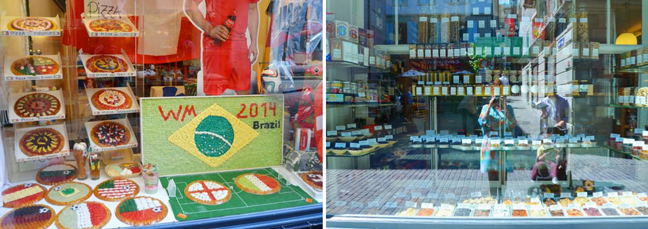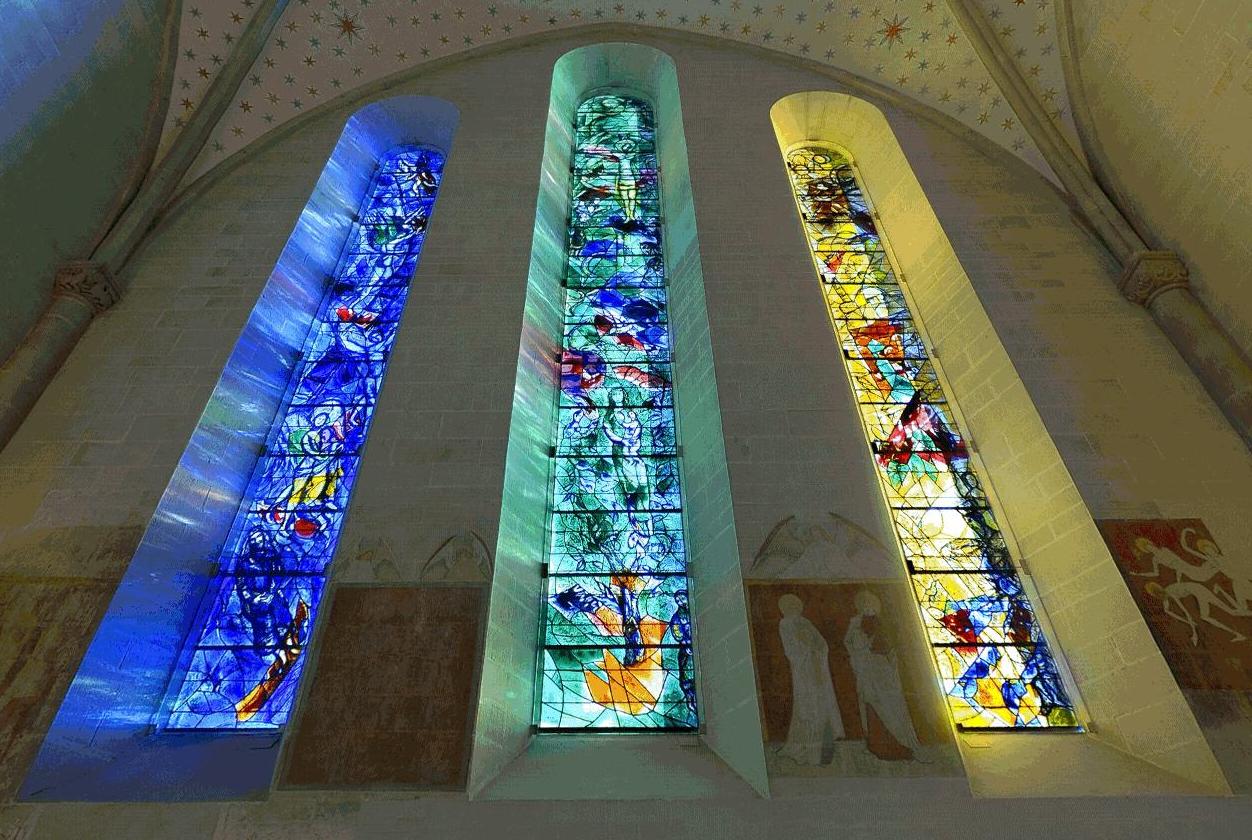We packed up the car and headed home - with a stop in Zürich, Switzerland first!
Zürich is a transportation hub where people fly in or change trains and don't tend to give stopping a serious thought. But even though you won't find a hint of Swiss Miss in Switzerland's leading city - and with limited time I'd certainly spend it up in the picturesque mountains - Zürich is surprisingly comfortable and enjoyable for a visit! Zürich was founded by the Romans as a customs post. Roman Turicam eventually became Zürich. It gained city status in the 10th century and by the 19th century it was a leading European financial economic center. Today, thanks largely to Switzerland's long-term economic and political stability, Zürich is a major hub of international banking. Its 370,000 people (1 million in greater Zürich) are known for their wealth and hard work. Zürich is the only place in Switzerland where you'll see men in ties running in the streets, haha.
Zürich is a transportation hub where people fly in or change trains and don't tend to give stopping a serious thought. But even though you won't find a hint of Swiss Miss in Switzerland's leading city - and with limited time I'd certainly spend it up in the picturesque mountains - Zürich is surprisingly comfortable and enjoyable for a visit! Zürich was founded by the Romans as a customs post. Roman Turicam eventually became Zürich. It gained city status in the 10th century and by the 19th century it was a leading European financial economic center. Today, thanks largely to Switzerland's long-term economic and political stability, Zürich is a major hub of international banking. Its 370,000 people (1 million in greater Zürich) are known for their wealth and hard work. Zürich is the only place in Switzerland where you'll see men in ties running in the streets, haha.


Rick says this is the best museum in town offering an essential introduction to Swiss history. We had a 6 hour drive home ahead of us so we skipped it. But we admired the architecture :)

This major European hub handles 2000 trains a day including InterCity expresses to many major capitals. Built in 1870, its vast main hall was once lined with tracks. Today it hosts a farmers' market on Wednesdays and community hall - busy with concerts, exhibitions, and even "beach" volleyball.

The only park along this pedestrian and tram only boulevard is dedicated to Zürich's most important teacher, Johann Heinrich Pestalozzi (1746-1827) and is called Pestalozzi Park. He promoted the notion, still prevalent in today's Switzerland, that a good education should be available for everyone - not only for sons of rich families. Parks like this are rare in central Zürich because of sky-high property values which are among the most expensive in the world.





Zürich across the river.

Idyllic. Back when the city's trade depended on river traffic this small riverside street was Zürich's harbor. Today it retains its old river-merchant ambiance.
Rather than take a huge staircase up to our next point of interest we meandered through the city with our stroller and kids in tow to find an alternate route.
Important forts and strategic buildings stood on this square, Lindenhof, perched atop a mound of glacial debris - from Roman times through the Carolingian era. When Zürich became a free city in the 13th century the townspeople destroyed the fort here and established a law forbidding any new construction. The citizens realized that whoever lived on this hill would rule over the city - and they didn't want any more rulers. Today this is a people's square where locals relax under linden trees (for which the square is named) and enjoy the commanding city view.










The City Hall faces a fancy Neoclassical police station.

We walked a block uphill and wished we had bought a gummy pizza and dried fruits and such from the Cabaret Voltaire where Dada was born in 1916.
Farther up the street we came to the Grossmünster - literally the "big cathedral". This is where Huldrych Zwingli - whose angry religious fervor made Martin Luther seem mellow - sparked the Reformation in German-speaking Switzerland.

In 2006 Sigmar Polke won the invited competition to design the church windows for the Grossmünster. It took three years to complete this ambitious project. Seven windows in the western part of the church consist of sliced agate, creating brightly luminous walls of stone.
Um. Pretty much the coolest windows EVER!

Pictures weren't allowed in the cathedral but I snuck a few and the others are from the interwebs of these amazing windows. Good job Sigmar :)
I paid a few bucks to climb one of the towers for sweeping city views.
I paid a few bucks to climb one of the towers for sweeping city views.


Chagall (1887-1985) gave an exhibit in Zürich in 1967. It was such a hit that the city offered the world-famous artist a commission. To their surprise the 80-year-old Chagall accepted. He designed the windows to stand in the church's spacious choir - a space where he intuitively felt his unique mix of religious themes could flourish. For the next three years Chagall threw his heart and soul into the project, making the sketches at his home on the French Riviera then working in close collaboration with a glassmaking factory in Reims, France. After the colored panes were made Chagall personally painted the figures on with black outlines which were then baked into the glass. Chagall spent weeks in Zürich overseeing the installation and completion.

We meandered through another square and more small and narrow lanes to reach Paradeplatz.
We walked into the recommended Sprüngli - Zürich's top café for the past century. Its "Luxemburgerli" 1" mini macarons are a local favorite so we had to try one. Or, sixteen.
They were almost too pretty to eat! I love the shimmery pink ones! They tasted the best too with a jelly filling. Mmmm.
We munched on our Luxemburgerli all the way back to the car and drove home. Passing lots of castles on the way!

That concludes our whirlwind Switzerland trip! Our next big adventure is to Paris! Eeeps!






























Awesome recap! That was a very fun day in Zurich. Could those little macaroons BE any tastier?
ReplyDeleteGorgeous photos!!! Loving the stained glass ... and you're right ... that big blue angel totally looked out of place! LOL!!!
ReplyDeleteWe here in blogland are all so very lucky that you share your adventures with us. I for one am living vicariously through you. ;) LOVE these photos!
ReplyDeleteWhat a beautiful city! All those windows are gorgeous!!
ReplyDeleteJust read through the post again. I LOVE having all our trips documented so thoroughly. Thank you for doing these!
ReplyDelete